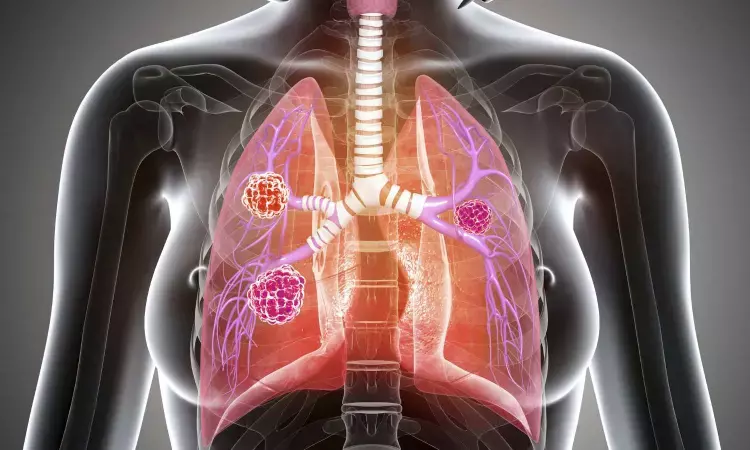- Home
- Medical news & Guidelines
- Anesthesiology
- Cardiology and CTVS
- Critical Care
- Dentistry
- Dermatology
- Diabetes and Endocrinology
- ENT
- Gastroenterology
- Medicine
- Nephrology
- Neurology
- Obstretics-Gynaecology
- Oncology
- Ophthalmology
- Orthopaedics
- Pediatrics-Neonatology
- Psychiatry
- Pulmonology
- Radiology
- Surgery
- Urology
- Laboratory Medicine
- Diet
- Nursing
- Paramedical
- Physiotherapy
- Health news
- Fact Check
- Bone Health Fact Check
- Brain Health Fact Check
- Cancer Related Fact Check
- Child Care Fact Check
- Dental and oral health fact check
- Diabetes and metabolic health fact check
- Diet and Nutrition Fact Check
- Eye and ENT Care Fact Check
- Fitness fact check
- Gut health fact check
- Heart health fact check
- Kidney health fact check
- Medical education fact check
- Men's health fact check
- Respiratory fact check
- Skin and hair care fact check
- Vaccine and Immunization fact check
- Women's health fact check
- AYUSH
- State News
- Andaman and Nicobar Islands
- Andhra Pradesh
- Arunachal Pradesh
- Assam
- Bihar
- Chandigarh
- Chattisgarh
- Dadra and Nagar Haveli
- Daman and Diu
- Delhi
- Goa
- Gujarat
- Haryana
- Himachal Pradesh
- Jammu & Kashmir
- Jharkhand
- Karnataka
- Kerala
- Ladakh
- Lakshadweep
- Madhya Pradesh
- Maharashtra
- Manipur
- Meghalaya
- Mizoram
- Nagaland
- Odisha
- Puducherry
- Punjab
- Rajasthan
- Sikkim
- Tamil Nadu
- Telangana
- Tripura
- Uttar Pradesh
- Uttrakhand
- West Bengal
- Medical Education
- Industry
Comprehensive CT scans may help identify atherosclerosis among lung cancer patients, suggests research

Several cardiovascular risk factors, such as advanced age and smoking history, are prevalent among lung cancer patients at the time of the diagnosis and increase their risk of future heart disease, according to a new study being presented at ACC's Advancing the Cardiovascular Care of the Oncology Patient course.
Comprehensive assessments are needed in this vulnerable group to improve survival outcomes and quality of care for cancer patients.
Heart disease and cancer are the leading causes of death in the United States. Smoking is a shared risk factor for lung cancer and cardiovascular disease, and lung cancer patients have an amplified mortality rate with the presence of existing cardiovascular disease. Some treatments for lung cancer, such as radiation therapy, could elevate the risk of heart disease for these patients.
“The overall goal of the study was to determine the presence of traditional cardiac risk factors in this specific cancer population and to determine the usefulness of available CT imaging in the identification of atherosclerosis present at the time of cancer diagnosis,” said Christopher Malozzi, DO, lead author of the study and director of cardio-oncology services at the University of South Alabama Frederick P. Whiddon College of Medicine. “Recognition of cardiac risk factors and atherosclerosis allows for earlier treatment interventions and risk factor modification in these patients.”
The study assessed 276 lung cancer patients at a cancer center for existing atherosclerosis on staging computed tomography (CT) scans. Atherosclerosis is when plaque builds up in the arteries, potentially blocking blood flow and leading to cardiovascular complications. Data was also collected on their systolic blood pressure), diastolic blood pressure, pulse pressure, body mass index, age, sex, race, smoking status and type of lung cancer. The results showed that 77.9% of the participants had detectable atherosclerosis on CT scans. Additionally, the data revealed that 47.8% of the patients had systolic blood pressure greater than or equal to 130 mmHg and 38% had diastolic blood pressure greater than or equal to 80 mmHg.
Systolic blood pressure is the top number on a blood pressure reading and indicates the pressure or force in the arteries when the heart is beating, while the diastolic number is the lower number and indicates the pressure in the arteries in between beats. Normal blood pressure should be below 120 mmHg/80 mmHg. Overall, 27.2% of the participants were obese and 88.8% were current or former tobacco users.
“Smoking was by far the most prominent cardiac risk factor in this group. This was followed by advancing age, hypertension and obesity,” Malozzi said. Although, the study lacked sufficient data to adequately assess the impact of high cholesterol or diabetes, these risk factors need to also be considered due to their relationship with cardiovascular disease, according to Malozzi.
Each patient underwent imaging for evaluation and staging of their lung cancer, which included a CT scan of the chest. Additionally, these CT scans could be used to detect atherosclerosis of the coronary arteries in the form of calcification within the blood vessels.
“This study suggests it may be reasonable to consider concurrent coronary calcium scoring on imaging obtained for lung cancer staging or screening to aid in identification of atherosclerosis and earlier intervention such as lifestyle, diet and cardiac risk factor modification education. The use of imaging already available may also reduce the need for additional testing in these patients and cut down overall health care costs,” Malozzi said.
The study group performed a similar analysis using CT scans to examine atherosclerosis in gynecological cancer patients entering treatment. The study found that atherosclerosis was present in nearly one-third of the study participants, indicating a high prevalence of heart disease. The cardiovascular disease risk factors examined are largely modifiable. The results of this study will also be presented during ACC’s Advancing the Cardiovascular Care of the Oncology Patient course.
Dr Kamal Kant Kohli-MBBS, DTCD- a chest specialist with more than 30 years of practice and a flair for writing clinical articles, Dr Kamal Kant Kohli joined Medical Dialogues as a Chief Editor of Medical News. Besides writing articles, as an editor, he proofreads and verifies all the medical content published on Medical Dialogues including those coming from journals, studies,medical conferences,guidelines etc. Email: drkohli@medicaldialogues.in. Contact no. 011-43720751


